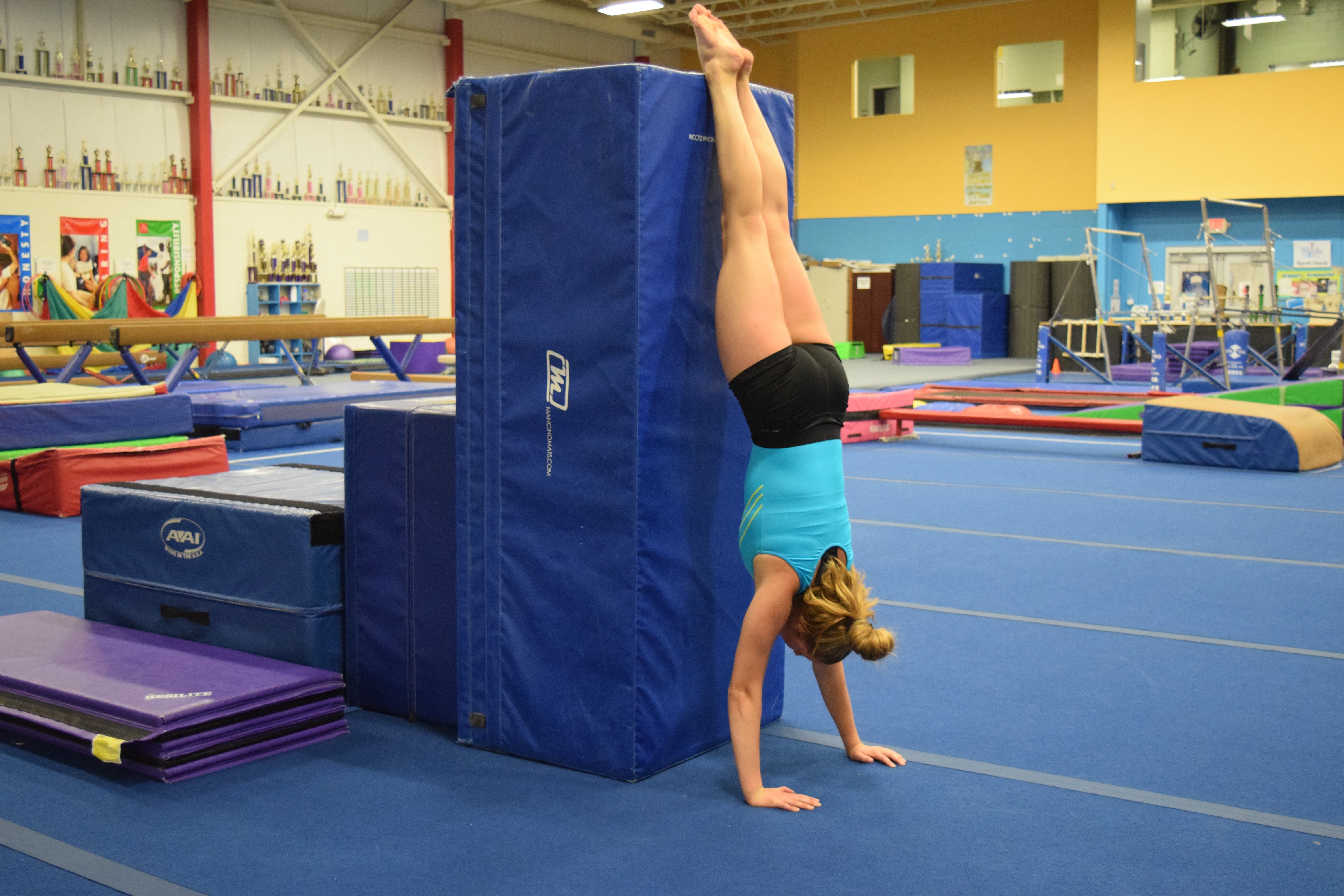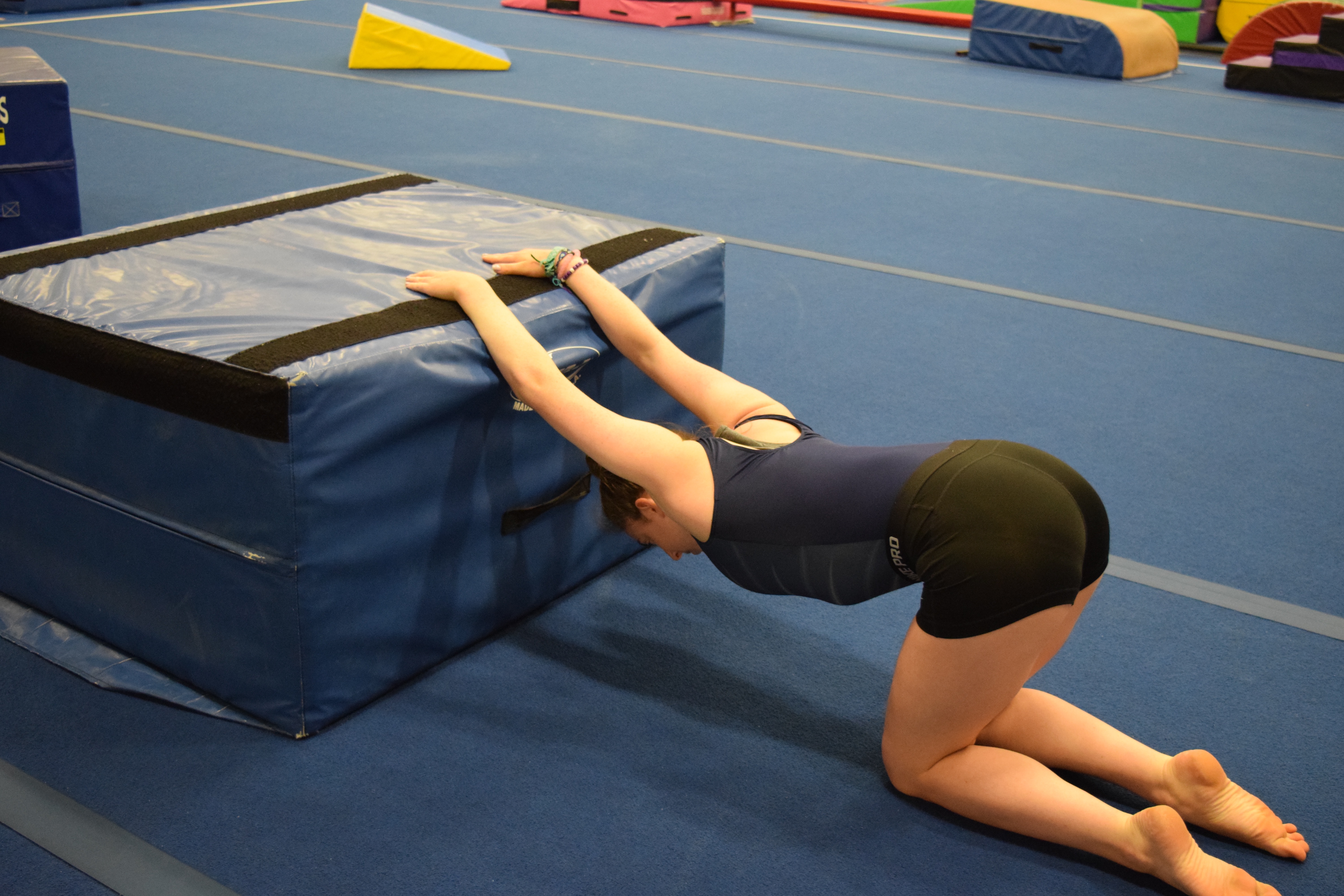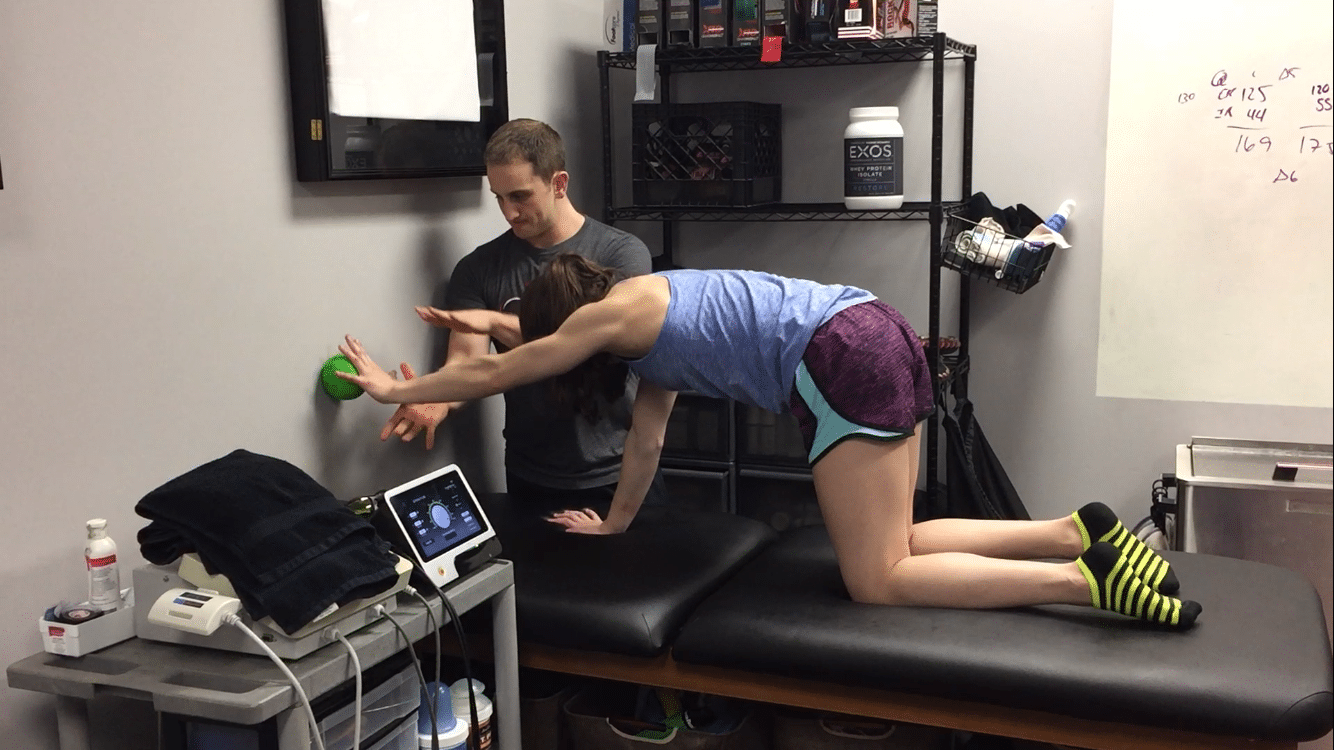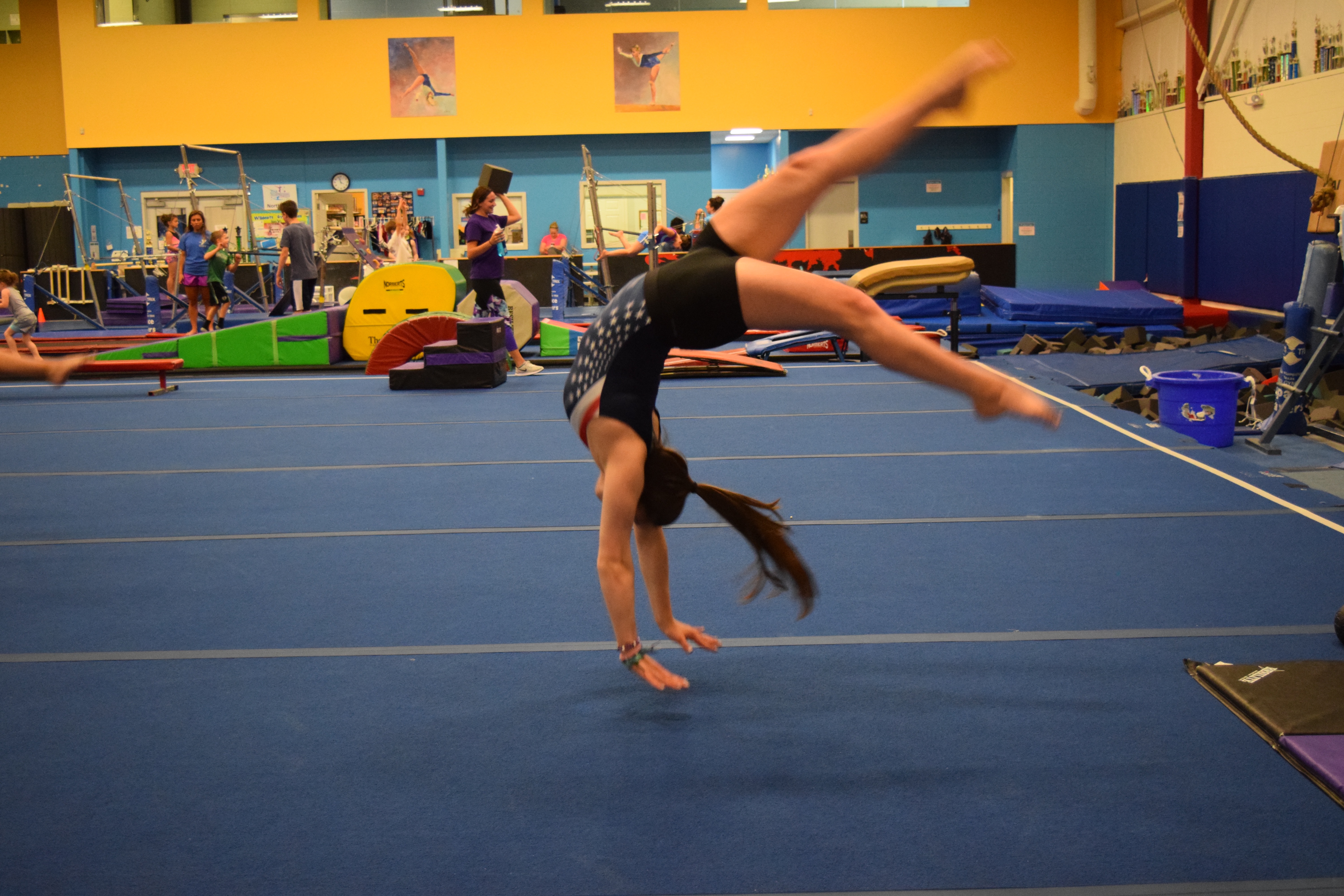7 Common Handstand Problems in Gymnasts and Exact Exercises To Fix Them
Handstands are one of the most basic skills gymnasts look to perfect, but they are surprisingly very complex. There are many possible reasons why someone isn’t able to stack a full straight handstand, which can be very frustrating for parents and coaches alike. As a PT and gymnastics coach who has helped 1000s of people with handstands, I wanted to summarize the 7 most common issues I see in people and offer some exercises to fix them.
Before we dive in though, if you work in gymnastics and want to learn the best information about flexibility, strength, and skill technique be sure to sign up for the 2023 SHIFT Symposium where we will have 30 gymnastics experts sharing their best skills and progressions over 3 days. Only a few more weeks to get tickets!
Let’s dive in.

Table of Contents
Problem 1: Limited Overhead Soft Tissue Mobility
Handstands require a significant range of motion in the shoulders, which can be limited by tightness in the muscles responsible for shoulder actions. In particular, the latissimus dorsi teres major are the most common muscles that limited this range of motion. This is because of the demands of gymnastics, rapid growth in young athletes, and high-volume conditioning (pull-ups, rope climbs, leg lifts, etc) that might create stiffness.
To help with this regular soft tissue care, stretching, and specific exercises targeting the latissimus dorsi, teres major, and pec major/minor muscles can help improve overhead soft tissue mobility such as these exercises below.
Problem 2: Limited Thoracic Spine Mobility
The ability to fully open the upper back, or thoracic spine, is crucial for handstands. This is because the upper back allows the shoulder blades to move upward and rotate, which then allows the arms to fully move into end range overhead position. Lots of emphasis on hollowing the upper back as well as upper body imbalances (see problem 1) can create this rounding. To help I like using foam roller extensions and upper back rotations with end range breathing.
Problem 3: Limited Wrist Extension Mobility
Often overlooked, wrist extension mobility is essential for achieving a solid handstand position. This is because in a fully stacked handstand, the shoulders must be able to stack over the hand, which requires the wrist to fully bend up to 110+ degrees. Overuse of gripping muscles or wrist joint irritation can result in limited wrist extension, which is common in athletes. Direct soft tissue care to the forearm flexors, forearm stretching, and wrist extension glides can help out with this.
Problem 4: Upper Back and Scap Strength Deficits
Neglecting the muscles of the upper back and shoulder blade, such as the rhomboids, middle traps, and rotator cuff, can lead to challenges. in being able to hold and maintain a good open shoulder angle in a handstand. While some gymnasts struggle with shoulder flexibility, others have plenty of mobility but lack the underlying strength of the shoulder blades to do higher-level skills. Strengthening these muscle groups through horizontal pulling exercises, along with scrap-specific exercises can help with this. I like face pulls, feet elevated rows, renegade rows, and prone U’s.
Problem 5: Core Strength/Control Issues
Core strength and control play a vital role in maintaining a stable handstand position. It is essential to differentiate between raw core strength and core control. One piece to core control is about knowing what position the spine is in (arch, hollow, netural, etc). Another is the skill of being able to brace the entire core “cannister”, not just flex the 6 pack abs, to create high tension are crucial for effective handstands. To teach this, I like starting with deadbugs/bird dogs, then progressing to loaded Farmer Carries (bracing and breathing) and then progress to wall facing handstand drills.
Problem 6: Limited Hip Extension Mobility
Similar to the shoulders, many gymnasts struggle with limited hip opening due to stiff hip flexors, quads, and groin muscles. Again, this could be due to growth, repetitive training, or imbalances in conditioning (lots of leg lifts, v-ups, L holds, etc). Improving soft tissue length of these muscle groups, and then working to strengthen the glutes/hip external rotators, can help allow flat hips in handstands which create a more ideal line.
For soft tissue care, I like a true quad stretch, inner thigh dips, and eccentric stretching via sliders and split squats.
Problem 7: Technique Issues
Technique plays a significant role in mastering handstands. A gymnast could have great mobility, great strength, and understand core control, but without regular daily practice to learn the technique of body tension and balance, they might still not see the progress they want. There are hundreds of great drills out there, but my go-to one is a 3-step – 3-second hold handstand lap. it helps to learn both static holds, as well as weight shifting and balance.
How Often Should I Do Them:
For all of the above exercises, it is about consistency over intensity. Research shows that to make noticeable gains in range of motion, regular stretching or soft tissue care should be done 5-10 minutes per day in 2-3 sets of 30 seconds, 5-6 days per week, for a minimum of 4 weeks (article here). So aim to get a good assessment first and sort out which of these issues is the biggest one to tackle first, and then commit to it for a month to evaluate its effectiveness.
Also remember, if you want tons of drills, skill progressions, and expert gymnastics coaching advice be sure to grab your tickets for our epic 3-day SHIFT Symposium June 23rd – 25th! All the information and tickets can be found here.
Hope this was helpful!
– Dave
Dave Tilley DPT, SCS











